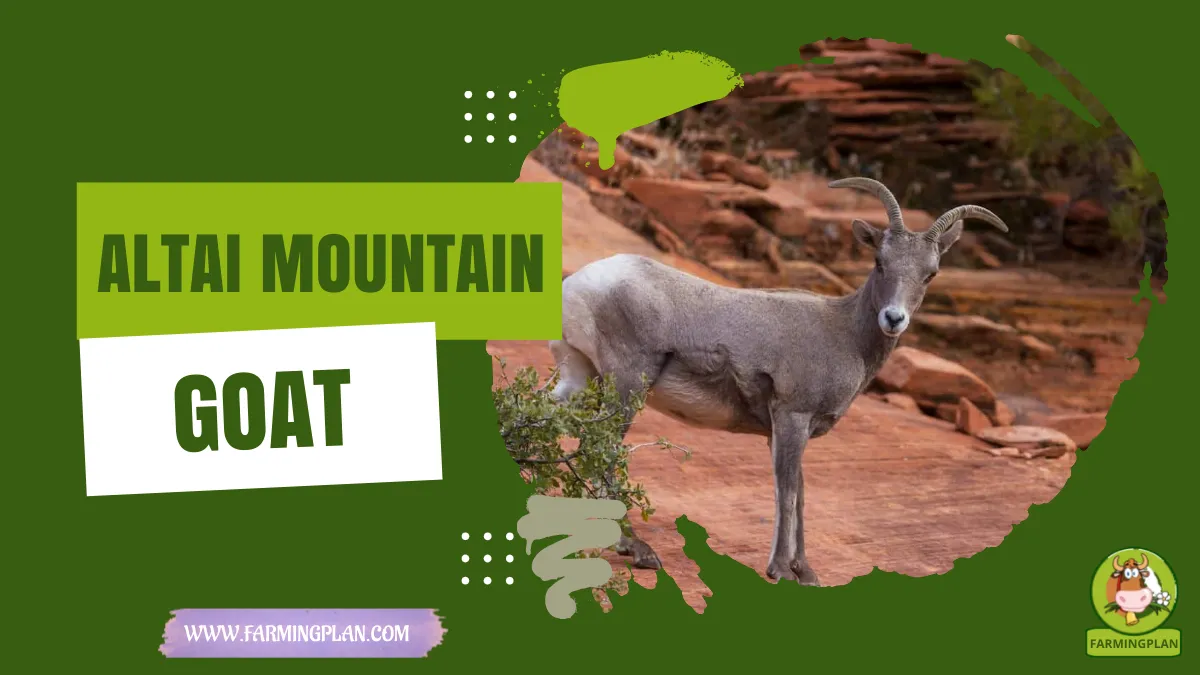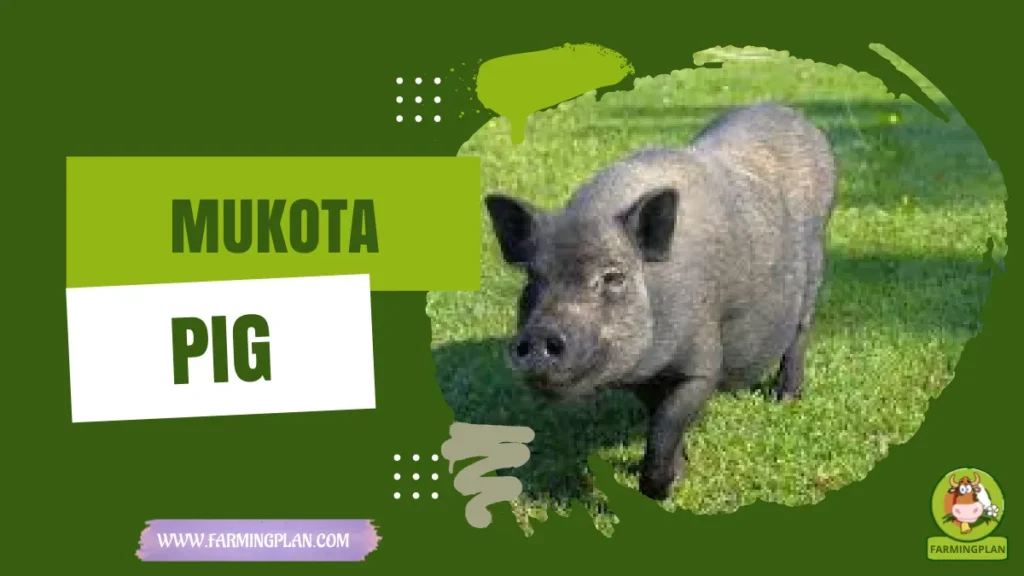The Altai Mountain Goat is a real gem for anyone who loves goats, especially those into sustainable wool production. Raised in the rugged Altai Mountains, this breed thrives where others struggle, making it a favorite for breeders, farmers, and homesteaders alike. With their long, luxurious guard hair and dense undercoat perfect for cashmere, these goats aren’t just beautiful—they’re hardworking, too. In this guide, I’ll walk you through everything from their history and diet to how I personally care for them on my farm. If you’re considering a breed that combines resilience, productivity, and a touch of mountain spirit, the Altai Mountain Goat might just be your new best friend.

History & Origin of Altai Mountain Goat
Altai Mountain Goats, with their long history tracing back centuries in the Central Asian highlands, are a testament to resilience. First bred by nomadic tribes of the Altai Mountains, which span Russia, Mongolia, Kazakhstan, and China, these goats evolved naturally to withstand brutal winters and survive on sparse vegetation. Their toughness is unmatched, making them a reliable choice for any farmer.
Originally managed by collective farms in the Soviet era, these goats became prized for their ability to produce wool in extreme climates. They’ve been selectively bred over generations to maximize wool quality and hardiness. Their ancestry shares traits with Don goats, Angora goats, and local indigenous breeds, combining the best features for life at high altitudes. Today, they’re making a comeback among eco-conscious farmers for their natural, low-maintenance appeal.
Read More: Honey Bee Life Cycle – Inside The Buzzing Miracle
Characteristics
Altai Mountain Goats are medium to large in size, with adult males weighing around 70–90 kg and females between 50–70 kg. Their sturdy frame, powerful legs, and well-developed muscles help them navigate rocky terrain with ease. They have thick, woolly coats with long guard hairs that protect them from wind, snow, and cold.
Color-wise, they range from white to light grey or tan, which reflects sunlight and keeps them cooler during the day. The undercoat is where the magic happens—a dense, soft layer of cashmere-like fiber that’s combed out in spring. Horns are typically curved and impressive in males, while females have more delicate shapes.
Nature & Temperament
If you’re looking for a goat that’s friendly and easy to manage, Altai Mountain Goats have you covered. These goats are calm and social, making them ideal for group settings like goat flocks or small hobby farms. They bond well with other animals and even seem to thrive in mixed herds.
From what I’ve seen on my farm, they’re quick learners and rarely act out. Their seasonal behavior patterns mean they’re particularly docile in winter and more active during spring shearing season. Unlike more mischievous breeds, they’re not escape artists—as long as you offer food and shade, they’ll stick around.
Altai Mountain Goats are not just resilient and adaptable, they’re also quite intelligent. You can teach them routines, and they’ll remember pathways to water and pasture. This intelligence makes daily management a breeze, especially if you’re juggling other animals. Their quick learning and good behavior will give you confidence in your ability to manage them effectively.
Read More: Bleu de Gascogne Dog – The Noble French Hound You’ll Love
Food & Diet of Altai Mountain Goat
Altai Mountain Goats are masters at turning low-quality forage into energy. On the mountain slopes, they survive on grasses, herbs, and shrubs. In pasture-feeding conditions, I supplement their diet with hay, alfalfa, and grain, especially during winter.
A typical diet includes:
- Hay & Forage: Main staples for roughage
- Grain Mixes: Barley, oats, and bran during cold months
- Mineral Blocks: Essential for hoof and coat health
- Fresh Water: Always accessible
Avoid overfeeding grains—too much can upset their rumen. I also keep them off toxic plants like rhododendrons and azaleas. Their digestion is strong but not invincible!
Usage & Purpose
The Altai Mountain Goat’s main claim to fame is its wool production—especially cashmere. Each goat yields up to 300 grams of cashmere annually, making them a great choice for fiber farmers. Their guard hair also adds to their insulation, doubling the utility. They’re not typically used for meat, although older goats sometimes are culled for local consumption.
Some farmers also explore hybrid breeds like Cashgora goats (crosses with Angora) for diversified wool types. Their gentle nature makes them potential therapy or educational animals, too. They fit right into petting zoos or teaching farms. While not major milk producers, you can get small quantities for home use.
“Strong Like The Mountains They Climb, Altai Goats Turn Harsh Climates Into Gold-Worthy Wool.”
Special Features
These goats pack a surprising list of special traits:
- Climate Resilience: Cold, wind, snow? No problem!
- High-Wool Output: Fine cashmere undercoat + coarse guard hair
- Low Maintenance: Thrive on basic feed and minimal intervention
- Smart & Adaptable: Learn routines and navigate terrain easily
- Strong Genetics: Pedigree goats with years of selective breeding
You also don’t need fancy infrastructure. A simple three-sided shed keeps them happy all year.
Health Issues & Prevention
Altai Mountain Goats are generally hardy, but like all goats, they need regular care. The most common issues I encounter are:
- Internal Parasites: Rotate pastures, use dewormers as needed
- Hoof Rot: Keep areas dry and trim hooves monthly
- Respiratory Infections: Avoid drafts, especially in wet seasons
- Mineral Deficiencies: Provide salt and mineral blocks
Vaccinate kids against common diseases like clostridial infections. Watch for signs like limping, loss of appetite, or coughing. Prevention is always easier (and cheaper) than treatment.
Step-By-Step Farming Guide
Starting with Altai Mountain Goats is one of the most rewarding decisions I’ve made. Here’s my hands-on, step-by-step approach for first-time goat keepers or farmers adding a wool line.
Step 1: Set Up Shelter And Fencing
Build a three-sided shelter to protect from wind and snow. Use windbreaks in open fields. Fencing should be 4-5 feet tall with strong wire mesh to keep predators out and goats in. I avoid electric fencing, but they tend to ignore it. The bedding should be straw or wood shavings, replaced weekly to prevent hoof issues. Set up water troughs where they won’t freeze.
Step 2: Start With A Healthy Herd
Buy from reputable breeders with records of wool yield and health. I recommend starting with 3–5 goats—a small flock lets you learn without being overwhelmed. Ask about vaccinations and check for signs of illness before purchase. Quarantine new goats for 2 weeks to prevent introducing parasites.
Step 3: Design A Feeding Schedule
Feed hay twice daily, with small grain portions in winter. Add mineral and salt licks around the pen. Make fresh water easy to access. Let them graze on pasture whenever possible. More movement = better wool quality and muscle tone.
Step 4: Grooming And Wool Collection
Use a comb to harvest cashmere during spring molting. Don’t shear—you want the fine undercoat, not the coarse guard hair. Groom once a week to reduce matting. Store wool in breathable bags in a cool, dry place.
Step 5: Monitor Health Regularly
Trim hooves every 4 weeks. Deworm as needed based on fecal tests. Vaccinate annually and keep vet records. Keep an eye out for weight loss, limping, or changes in coat quality. Happy goats = better wool.
Expert Tips & Best Practices
- Rotate pastures every 2–3 weeks to reduce parasite loads
- Use brush or trees for shade instead of expensive structures
- Mix Altai goats with calm breeds like Pygora for herd stability
- Harvest wool in dry weather for easier processing
- Let goats socialize—they bond and manage stress better together
FAQs
How much wool does an Altai Mountain Goat produce?
A healthy adult can yield about 250–300 grams of cashmere each spring, depending on diet and grooming.
Are Altai Mountain Goats good for beginners?
Yes! Their calm nature and hardiness make them ideal for new farmers or hobbyists.
Do Altai Mountain Goats need special shelter?
Nope. Just a basic, dry, three-sided shelter will do the trick.
Can they be kept with other goat breeds?
Absolutely. They get along well with other gentle breeds and even sheep.
Are they used for meat or milk?
Not typically. They’re primarily kept for their fiber, though some farms use them for small-scale milk or meat.
Conclusion
The Altai Mountain Goat has won my heart and earned its spot on my farm. With their durable wool, kind temperament, and no-fuss care routine, they’re the perfect partner for anyone looking to start or expand a sustainable agricultural endeavor. Whether you’re in it for cashmere, companionship, or both, these goats bring solid value with a touch of mountain magic. Ready to give them a shot? Share this guide, drop a comment, and join the community of passionate Altai goat keepers today!


